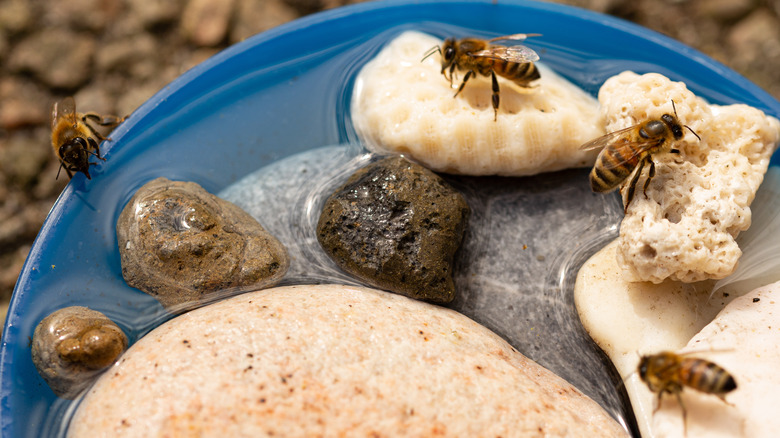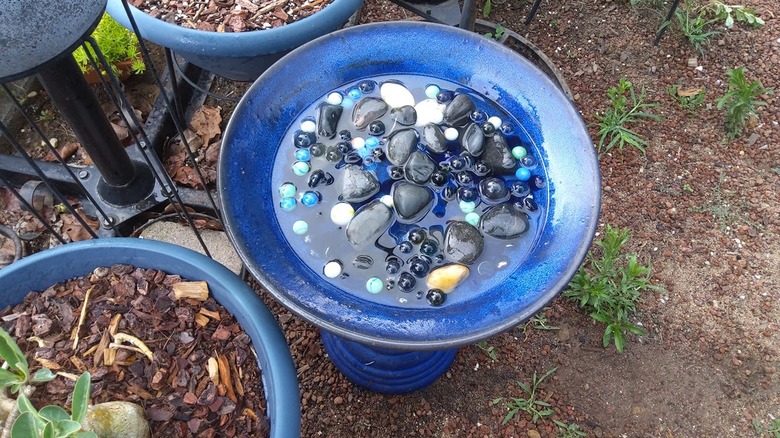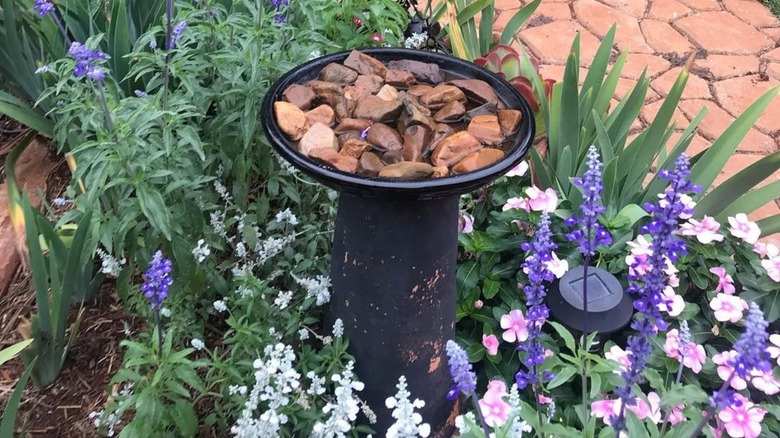Creating An In-Garden Watering Station For Your Local Bees
The plight of the declining bee population demands immediate attention. Factors such as habitat loss, pesticide exposure, and climate change significantly threaten these beneficial pollinators. Such a decline not only endangers our food supply but also the environment. You can do your part to support the necessary creatures where you live by setting up a watering station in your garden. A bee watering station typically consists of a shallow container or basin filled with water and perching spots. Bees require water for their survival and well-being, just like other animals. By dedicating an accessible water source, you can help them thrive in their natural habitat.
Creating a watering station is a straightforward process, and by understanding their needs, selecting the right location, and developing an appropriate design, you can significantly impact the well-being of bees. Regularly maintaining and monitoring the watering station to ensure water quality and cleanliness are vital factors in its effectiveness and sustainability. By taking these measures, you contribute to preserving these insects and supporting their crucial role as pollinators.
Choosing a location
When selecting a spot for a watering station, consider the proximity of bee-friendly plants and flowers. Bees are drawn to nectar-rich blooms, so positioning the watering station near these plants will make it more visible, convenient, and efficient for them. Safety is also a crucial factor to keep in mind. Bees are vulnerable to predators like birds and wasps while drinking water. Placing the watering station in an area that offers cover or has natural barriers like shrubs or trees creates a sheltered environment that encourages the insects to visit and drink water without feeling exposed.
Providing a peaceful environment for bees is equally important. They are sensitive to disruptions and may be deterred from visiting a watering station placed in a high-traffic or noisy location. Choose a tranquil and calm spot in your garden, away from busy pathways or areas with frequent human activity. This will enable bees to access the watering station undisturbed, allowing them to drink and carry out their vital pollination work in a stress-free setting.
Making a bee watering station
There are many ways to create a bee watering station. You can use a birdbath or an upside-down terra cotta pot with a saucer on top. Shallow dishes made of ceramic or glass work well too. The important thing is to make the water source shallow and easy for bees to access so they can collect water safely. Incorporating natural elements like rocks and pebbles or decorative items such as marbles can create landing and perching spots for bees.
Maintaining water quality and cleanliness is vital, as stagnant water can become a breeding ground for bacteria and mosquitoes, posing health risks to bees and humans. Replace the water every few days, or more frequently in warmer weather, and remove any debris or contaminants. Clean the basin with a mild, eco-friendly detergent and rinse thoroughly before refilling to ensure water remains pollutant-free. If bee visits decline, consider adjusting the location or design to make it more attractive and accessible.


